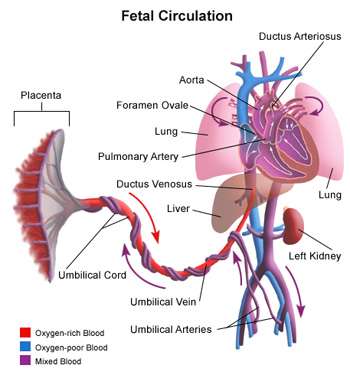Congenital Abnormalities
Find Your Care
Whether you need a preventative examination, pregnancy care or treatment for a gynecological condition, our OB/GYN specialists are here for you. Call 310-794-7274 to schedule an appointment today.
What is a Congenital heart defect?

Congenital heart defect corrective surgery fixes or treats a heart defect that a child is born with. A baby born with one or more heart defects has congenital heart disease. Surgery is needed if the defect is dangerous to the child’s health or well-being.
How does the fetal circulatory system work?
During pregnancy, the fetal circulatory system works differently than after birth:
- The fetus is connected by the umbilical cord to the placenta, the organ that develops and implants in the mother's uterus during pregnancy.
- Through the blood vessels in the umbilical cord, the fetus receives all the necessary nutrition, oxygen, and life support from the mother through the placenta.
- Waste products and carbon dioxide from the fetus are sent back through the umbilical cord and placenta to the mother's circulation to be eliminated.
The fetal circulatory system uses three shunts, which are small passages that direct blood that needs to be oxygenated. The purpose of these shunts is to bypass certain body parts--in particular, the lungs and liver--that are not fully developed while the fetus is still in the womb. The shunts that bypass the lungs are called the foramen ovale, which moves blood from the right atrium of the heart to the left atrium, and the ductus arteriosus, which moves blood from the pulmonary artery to the aorta.
Oxygen and nutrients from the mother's blood are transferred across the placenta to the fetus. The enriched blood flows through the umbilical cord to the liver and splits into three branches. The blood then reaches the inferior vena cava, a major vein connected to the heart. Most of this blood is sent through the ductus venosus, also a shunt that passes highly oxygenated blood through the liver to the inferior vena cava and then to the right atrium of the heart. A small amount of this blood goes directly to the liver to give it the oxygen and nutrients it needs.
Waste products from the fetal blood are transferred back across the placenta to the mother's blood.